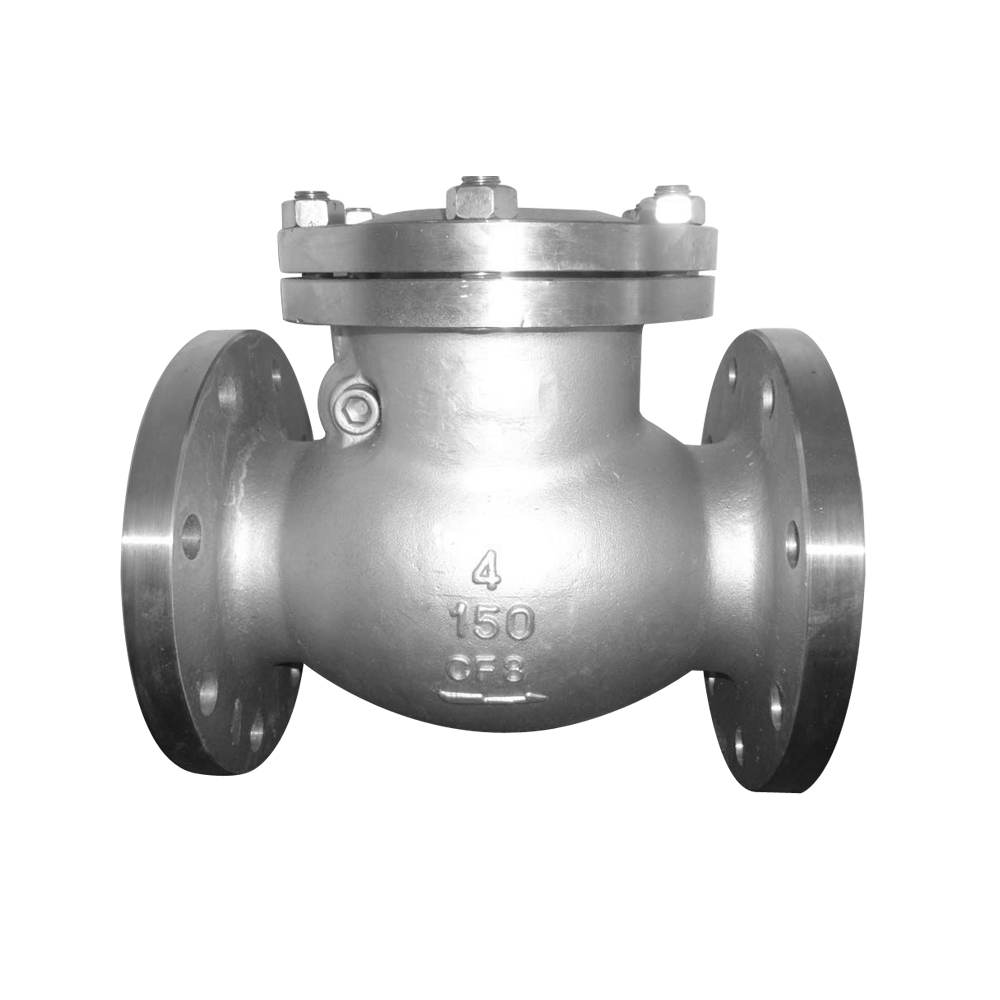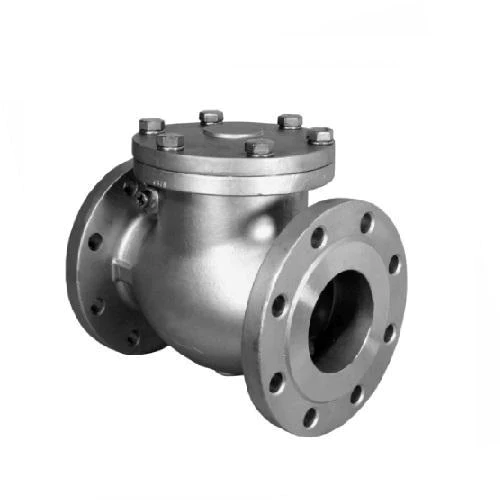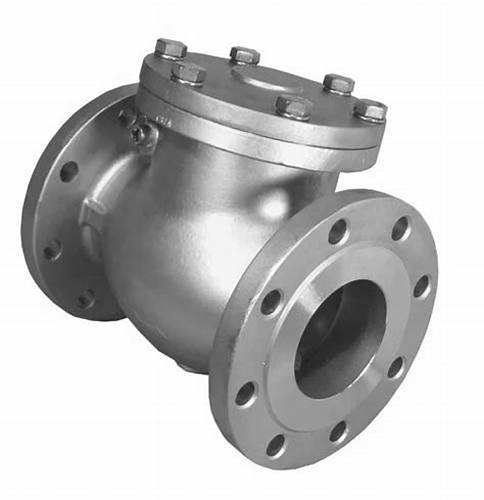Stainless Steel Swing Check Valve | Durable & Corrosion Resistant
Industry Trends in Stainless Steel Swing Check Valve Technology (2024)
In recent years, the global demand for stainless steel swing check valve solutions has risen steadily, driven by process reliability requirements and increasingly stringent safety and environmental standards in industries like petrochemical, water treatment, oil & gas, and metallurgy.
According to MarketsandMarkets, the global industrial valves market is projected to reach USD 88 billion by 2028, with stainless steel valves constituting a rapidly expanding segment due to their superior corrosion resistance, adaptability to corrosive/abrasive media, and longer lifecycle (source: MarketsandMarkets).

- Eco-efficient manufacturing: Emphasis on ISO14001-certified processes with minimal environmental footprint.
- Upgraded automation: Integration with Industry 4.0 systems for real-time diagnostics.
- Performance assurance: Growing adoption of EN 12266, ANSI/API 598, and ISO9001 quality standards.
SS swing check valves deliver excellent backflow prevention, low pressure loss, and maintenance-free longevity—a key selection point for modern industrial facilities.
Technical Overview: Structure, Parameters, and Product Highlights
The H44W-16/25/40P, R stainless steel Swing Check Valve employs resilient CF8/CF8M (SS304/316) or duplex stainless steel body construction with a precision-honed swing disc, robust hinge mechanism, and full-bore design for optimal flow characteristics.

| Model | Material | Size Range | Pressure Rating | Connection | Temp Range (°C) | Applicable Std. |
|---|---|---|---|---|---|---|
| H44W-16P/R | SS304/316 | DN15~DN600 | PN16 | Flanged (RF/FF) | -29 ~ 200 | ISO, ANSI |
| H44W-25P/R | SS304/316 | DN15~DN300 | PN25 | Flanged / Butt-weld | -29 ~ 420 | API, DIN |
| H44W-40P/R | CF8M | DN40~DN200 | PN40 | Flanged | -29 ~ 420 | ASME, ISO |
Key Features:
- Full stainless steel construction: Superior resistance to chemicals (H2SO4, NaCl, etc.)
- Energy-efficient flow: Disc design minimizes head loss vs. traditional check valves
- Flanged end or butt-weld options for diverse piping
- Extensively certified for use in global projects (ISO, PED, ANSI, GOST-R)
- Optional hardfacing/stellite alloy for abrasive flows
- Maintenance-free sealed hinge pin mechanism
Manufacturing Process of Stainless Steel Swing Check Valve
- Raw Material: Certified stainless bar/ingot, traceable to mill certificates.
- Casting/Forging: Shells produced as per ASTM/EN standards for density/free from inclusions—mainly precision casting (lost wax or silica sol) for class PN16–40; forging for high-pressure applications (PN40+).
- CNC Machining: High-precision machining for sealing faces, threads, and assembly tolerances.
- Assembly: Disc, hinge, bonnet, and fasteners mounted following ISO9001 procedures.
- Testing: Every valve hydro- and air tested under API 598/EN12266 norms. 100% PMI (Positive Material Identification) done for alloy verification.
- Packing: Corrosion-safe, seaworthy packaging & traceable labeling for global export.

This meticulous process delivers ss swing check valves characterized by smooth operating torques, tightest seat shutoff (Class VI for soft seat), and extended service life even in the harshest environments (oilfield, desalination, fertilizer, pulp & paper, etc.).
Technical Data Comparison: Stainless Swing Check Valve Models
Compare the H44W-16P/25P/40P, R series versus leading competitors based on real-world testing and published standards.
Application Scenarios and Case Studies
A leading Chinese refinery (Sinopec, 2023 retrofit project) replaced legacy cast iron swing checks with stainless swing check valve H44W-40P units in corrosive brine service. Post-upgrade, mean time between failure (MTBF) increased by 280%, while pump backflow incidents dropped to zero, boosting facility uptime and saving an estimated $910,000/year in downtime costs.
[Case #2: Water Desalination Plant]
In Abu Dhabi (2022-2024), over 150 H44W-16P stainless steel flanged check valves protect RO filtration arrays. The 100% SS316/316L valve bodies showed no corrosion, zero seat leakage and required no maintenance cycles during 24-month site operation (in accordance with AWWA and ISO materials reporting).

- Municipal Water Works: Reliable check function in chlorinated and high-pH water, ensuring potable water safety.
- Mining/Metallurgy: Prevents slurry and aggressive fluid backflow, safeguarding critical equipment.
- Pulp & Paper: Proven anti-sticking disc for process reliability.
- Offshore Platform: Full stainless/duplex option guarantees corrosion immunity in salt-laden air.
- Power Plant/Chemical Industry: Meets PED, ISO, and local authority requirements, ensuring safe condensate and process flows.
These cases illustrate how the stainless steel swing check valve series outperforms alternatives (carbon steel, bronze/check valves) in terms of lifecycle, leak reduction, and total cost of ownership.
Vendor Analysis: HBYS vs. Leading Global Suppliers

| Feature | HBYS H44W | Top US Brand | Top EU Brand |
|---|---|---|---|
| Material Traceability | Full (MTCS, PMI test) | Yes | Yes |
| Certifications | ISO9001, EN, API, PED | ISO, API, NSF | ISO, PED, CE |
| Customization | High (non-standard size, materials) | Medium | Low |
| Lead Time (weeks) | 2–4 | 8–12 | 6–10 |
| Price Index | 1.00 | 2.25 | 1.85 |
| Warranty | 24 months | 12–18 months | 12 months |
HBYS stands out for rapid delivery, material certification, deep customization, and extended warranty. Their stainless steel swing check valve offers high cost-effectiveness and global standard compliance.
Customization & Delivery: The HBYS Service Advantage
- Custom design: Non-standard sizes (DN10–800), exotic alloys, body seat surfacing and multi-standard drilling.
- Fast delivery: Typical lead time 2–4 weeks, urgent orders possible in 10 working days.
- Full documentation: 3.1 MTC, test report, COC, and export packaging/instructions.
- Warranty & service: 24 months quality warranty, professional after-sale team, and 24/7 online support.
- On-site service: Installation, commissioning, and periodic inspection available worldwide.
FAQs: Professional Questions & Answers on Stainless Steel Swing Check Valve
- Q1. What is the difference between a swing check valve and a lift check valve?
- A swing check valve (like HBYS H44W series) uses a hinged movable disc to block/release flow, while a lift check valve uses a piston moving up/down. Swing type is preferred for low-velocity, large-bore pipelines because of lower pressure drop and easier maintenance.
- Q2. Which stainless steel grade is optimal for corrosive media?
- SS316 (CF8M) is typically chosen for higher corrosion resistance in aggressive chemicals (chlorides, acids). SS304 suits less harsh media. For seawater, duplex or super duplex alloys may be selected.
- Q3. What industry standards are applied in valve production?
- H44W follows ISO9001 for QA management, EN12266/API598 for seat and shell pressure test, ASME B16.34 for wall thickness, and ANSI or DIN for flanged ends.
- Q4. Can stainless steel flanged check valves be installed vertically and horizontally?
- Yes, H44W series can be installed in both positions, but optimal performance is with horizontal flow to maximize self-closing and minimize water hammer risk.
- Q5. What is Positive Material Identification (PMI)?
- PMI uses XRF or OES analyzers to confirm alloy content (e.g., verifying SS316L) on finished components, ensuring material and quality compliance.
- Q6. How does the anti-corrosion coating affect valve life?
- Stainless steel does not require painting; its chromium oxide layer provides inherent anti-corrosion. For extreme abrasion, hardfacing (Stellite, tungsten carbide) can be added to the seat/disc for enhanced life.
- Q7. What is the typical pressure drop across a ss swing check valve?
- At recommended velocities (2–3 m/s), pressure drop is typically <0.08 bar for DN100–DN300 full-bore valves (source: HBYS CFD test reports).
Professional Terminology Explained
Ordering & After-sales
- Delivery time: 2–4 weeks (standard); 10–14 days (expedited).
- Quality assurance: 24 months from dispatch date, covers mechanical defects, leakage, and material issues.
- Service: Remote troubleshooting, global field support, online parts selection, and free technical consulting.
- Certification: Full EN, API, PED, ASME, GOST documentation optional.
Summary & Authority References
In summary, the stainless steel swing check valve (H44W-16/25/40P, R) sets industry benchmarks for reliability, energy efficiency, lifecycle value, and process safety in harsh media applications. Its tested advantages over standard and budget valve types make it a preferred choice for engineering-driven projects worldwide.
- Valve Manufacturers Association: Industrial Swing Check Valves
- Chemical Engineering Online: How to Specify Check Valves
- Valve Magazine - Art of Specifying Check Valves (Flow Control Network)
- ScienceDirect: Energy Loss and Water Hammer Reduction by Swing Check Valves
- ENG-TIPS Industrial Valve Forum – User Case Discussions
-
The Key to Fluid Control: Exploring the Advantages of Ball Valves in Industrial SystemsNewsJul.09,2025
-
The Versatile World of 1, 2, and 3 Piece Ball ValvesNewsJul.09,2025
-
Stainless Steel Ball Valves: The Ideal Choice for Efficient Flow ControlNewsJul.09,2025
-
Optimizing Fluid Control with Ball Float ValvesNewsJul.09,2025
-
Manual Gate Valves: Essential for Control and EfficiencyNewsJul.09,2025
-
Everything You Need to Know About Butterfly ValvesNewsJul.09,2025
-
The Versatility of Wafer Type Butterfly ValvesNewsJul.08,2025




